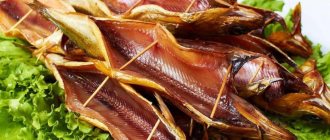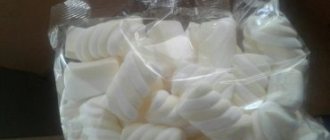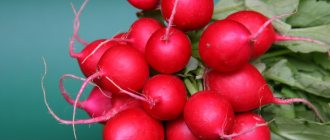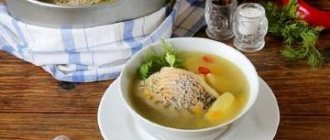Babies and sweets are two components that cannot be imagined separately. Often, without the permission of adults, they try to introduce as many sweet foods into their diet as possible, subsequently undermining their health. Let's look in more detail at what age and how to properly accustom a child to sweets, and is it possible to do this up to a year?
Lactose is the baby's first sweet that comes with milk.
The very first sweet that babies get into their bodies is lactose. It is an integral part of all breast milk. If the baby is bottle-fed, then the formula also contains a small dose of lactose to make this product as close as possible to natural milk.
Over time, the child begins to have his first complementary foods, where he tries different types of sweets in the form of purees, juices or natural fresh vegetables and fruits.
Very often, many mothers make a mistake and try to additionally sweeten these products with natural sugar so that the child shows a better appetite for new introduced products. However, such tactics over time lead to childish manipulations, obesity and dental problems.
Calorie content and composition of marshmallows
Chocolate marshmallows are the most high-calorie variety of this product.
According to the classic version of the marshmallow recipe, its composition should include the following ingredients:
- fruit or berry puree;
- sugar;
- egg white;
- thickener.
All components are thoroughly mixed, the resulting homogeneous mass is whipped.
To make marshmallows, agar-agar, pectin, and gelatin are used as thickeners. Each of them affects not only the structure of sweetness, but also its taste. It is the thickeners that provide marshmallows with the necessary consistency and the shape that has been familiar for centuries.
A denser marshmallow is obtained with pectin, with agar-agar it is airy, with gelatin it is elastic.
Characteristics of thickeners:
- Pectin is a natural plant product. It is obtained from apples, citrus peels, sugar beets, and sunflower heads. Used in cooking in the form of a brown, odorless powder.
In water it swells and dissolves. In confectionery products, its presence is indicated by code E 406. A significant portion of the vitamins from used fruits are destroyed during the manufacturing process of the product.
- Agar-agar is also a natural product. The raw materials for its production are red and brown algae. It is used in powder form, which dissolves in water at a temperature of 85-100 °C.
- Gelatin is of animal origin: it is obtained by processing (acid extraction) of bones, tendons, and cartilage of cattle.
The food industry uses its powder or small granules. When it gets into cold water it swells and dissolves in hot water. When cooled, the solution turns into jelly.
The basis of gelatin is proteins (collagen and 18 types of amino acids). In 100 g of gelatin, the proteins are about 87 g.
In the composition of the products, its code is E 441. If the amount of gelatin required in the recipe is exceeded, a meaty taste may be felt in the sweets.
Marshmallow is a fairly high-calorie delicacy: on average, the calorie content of 100 g is 300 kcal. Still, it is less than that of cakes, chocolate, cookies and candies.
The calorie content of marshmallows depends entirely on the components used. For example, the nutritional value of treats made with gelatin is much higher than those made with agar-agar.
The main nutrients in marshmallows are simple carbohydrates and proteins. But some manufacturers use new additives - yolks, butter in small quantities.
As a result, the calorie content of the treat increases. For example, the calorie content of chocolate marshmallows is 399 kcal: it contains only 1.3% protein, 84% carbohydrates, and 13% fat. That is, chocolate marshmallows are one of the most high-calorie varieties of marshmallows.
The composition of 100 g of white marshmallows includes:
- about 75 g carbohydrates;
- 1 g protein;
- 0.1 g fat;
- 2 g organic acids;
- 0.3 g ash;
- 5 g starch;
- 17 g water.
In addition, marshmallows contain micro- and macroelements:
- 6 mg magnesium;
- 27 mg sodium;
- 46 mg potassium;
- 25 mg calcium;
- 12 mg phosphorus;
- 1.4 mg iron.
Popular brands
| Brand | Kcal per 100 g | Components | pros | Minuses |
| "Belevskaya" | 324 |
|
|
|
| "Frutonyanya" | 306 |
|
|
|
| “Pastilushka” (in candies) | 263 |
|
|
|
| "Kolomchanka" | 294 |
|
|
|
| Kolomenskaya | 287 |
|
|
|
Varieties of marshmallows
In addition to the usual white, confectioners produce many varieties of marshmallows, which differ in composition, calorie content, and taste: marshmallows in chocolate, glazed, chewing, marshmallow candies and soufflé.
Manufacturers use:
- fruit fillings;
- nuts;
- chocolate;
- coconut flakes;
- glaze.
All these additives increase the calorie content of the classic dessert.
The benefits of marshmallows
Marshmallow improves memory, so it is recommended for schoolchildren as a snack.
The beneficial effect of delicacy on the body is undeniable.
- Marshmallow improves memory. Despite the high calorie content of sweets, its consumption is recommended for children (especially school age), as it helps improve the intellectual activity of the brain and increase the ability to assimilate material.
It is important to know that the caloric content is mainly provided by the carbohydrates contained in the treat. The main part of them (72 g) are simple, or fast, carbohydrates (mono- and disaccharides), which are quickly burned in the body during mental stress.
- Marshmallow carbohydrates are a good source of energy that can help a child quickly regain strength, for example, after playing sports. The treat quickly suppresses the feeling of hunger and gives a feeling of fullness.
When blood sugar levels drop, a child may experience irritability, increased heart rate, nervousness, and a feeling of hunger. To increase your glucose level, it is enough to eat 1 marshmallow.
- Agar-agar, which is most often used in the production of marshmallows, due to the content of dietary fiber in the composition, enhances intestinal motility, improves liver function, relieves a child from constipation, and helps remove toxins from the body.
Agar-agar, like a sponge, can absorb some of the fats, toxins of pathogenic microorganisms, pathogens of intestinal infections and peptic ulcers. It is no coincidence that the daily diet of the Japanese, known as a nation of long-livers, includes agar-agar.
- A significant amount of iodine in the treat, due to agar-agar, satisfies the body's daily need for iodine and normal thyroid function.
- Pectin from fruit puree, used to make treats, is not absorbed in the digestive system. It is excreted from the body along with toxic substances, pesticides, and radionuclides sorbed by it, which helps improve immunity.
- Pectin has an analgesic and anti-inflammatory local effect in case of ulceration of the gastric mucosa.
- Gelatin-based marshmallows will be useful after traumatic damage to bones and joints. It will also improve the condition of hair, nails, and skin. Microelements contained in gelatin will have a beneficial effect on the functioning of the cardiovascular system.
- Vitamins preserved after thermal exposure have a general strengthening effect, ensure the normal function of many systems, and increase immunity.
- The microelements included in the treat also play an important role:
- iron prevents the development of anemia in children;
- phosphorus and calcium ensure the strength of skeletal bones and tooth enamel;
- sodium is involved in maintaining the water-salt balance of the body.
To whom and how is marshmallow harmful?
Even a healthy child can be harmed by marshmallows if they overuse the treat. Nutritionists recommend that children over 3 years old eat no more than 2 pieces of this dessert per day.
Being a high-calorie product (300 or more kcal per 100 g), marshmallows, consumed in large quantities, can lead to metabolic disorders and the accumulation of excess body weight, that is, obesity.
- The most high-calorie marshmallows are chocolate covered, with icing or coconut flakes. The treat is not recommended for children with metabolic disorders or obesity.
- Children with diabetes can only eat marshmallows made with sorbitol or fructose.
- The presence of dyes, flavors, and preservatives in treats (green, purple, yellow, pink) creates the risk of children developing an allergic or other, even unpredictable, reaction.
- Allergies can also be caused by additives in marshmallows in the form of nuts, chocolate, coconut flakes and other powders. The best for children is a white delicacy without any additives.
If a child has an individual intolerance to any component of the product, the use of marshmallows is contraindicated!
If you have a food allergy to other foods, you should offer your child to try marshmallows with great caution, after consulting with an allergist.
Although marshmallows are healthier for children than candy, a large amount of sugar in the treat (as, indeed, in other sweets) contributes to the development of caries.
Possible harm
In addition to natural products, store-bought marshmallows may contain artificial dyes and chemical additives that can cause various allergic reactions. Some manufacturers go overboard with the use of sugar and molasses.
- It is necessary to limit the use or completely abandon store-bought marshmallows with added sugar for children with diabetes.
- Having an allergy to egg whites and food additives is a direct contraindication to consuming sweets containing them.
- If there is an exacerbation of chronic diseases of the digestive system (gastritis, ulcers), or problems with the liver, it is prohibited to give marshmallows to the child on a regular basis.
How to choose marshmallows for a child
Currently, it is not easy to find marshmallows made according to traditional recipes in stores.
In most cases, with the goal of reducing the cost of production, confectioners use substances that are harmful to any (and especially children’s) body:
- acidity regulators;
- dyes;
- preservatives;
- stabilizers.
You should only buy dessert prepared in accordance with GOST (state industry standard), which guarantees product quality, and not in accordance with TU (technical conditions) or any other quality standard.
- It is necessary to carefully study the composition and expiration date of the product.
- Pay attention to the thickener used. It is better to buy marshmallows with plant-based thickeners, that is, agar-agar or pectin.
The results of biochemical studies have shown that in the osteochondral tissues of animals from which gelatin is prepared, antibiotics and hormones obtained by animals during their lifetime as a result of the intensification of animal husbandry can accumulate. If a child receives these substances, it will cause harm to the child.
Experts recommend carefully assessing the appearance of the product and its color:
- a low-quality product is not snow-white in color, but grayish;
- The marshmallow itself is not airy, but heavier and denser;
- its core is damp.
This means that the producers did not use fresh eggs, but dried, or possibly frozen, whites. You should not buy such a delicacy: not only is it tasteless, it will also harm the child’s health.
- It is not recommended to purchase treats with tempting colors for children: the dyes are harmful to the child. It is better to buy white marshmallows without additives.
- The quality of a product can also be assessed by its consistency. After light pressure, the treat should restore its original shape. If the marshmallow sticks together or falls apart after pressing, then there is no need to buy it.
Summary for parents
Marshmallows prepared according to the traditional classic recipe will benefit the child at a reasonable dosage.
The treat will ensure the removal of toxic substances from the body, improve memory, and help absorb school material. Even one piece of white marshmallow will be enough to restore the child’s strength.
Multi-colored culinary masterpieces definitely contain dyes and other chemical ingredients that are harmful to the body. The ideal option for children is to eat marshmallows prepared by the mother herself.
In the program “Everything will be fine” on how to make marshmallows:
At what age do you think a child can be given marshmallows and is it worth it? If anyone has, please share recipes for homemade marshmallows (if such a thing exists) and homemade cheese.
I just have some fear of store-bought treats. I try to cook everything I can for my child at home. But if there are no problems with cookies, cakes, and candies, then I don’t think you can make marshmallows at home. I think that if you buy “real”, high-quality marshmallows, then the child will only benefit from it. But the thought is constantly in my head that if condensed milk is faked, then it’s scary to imagine what could be in the marshmallows.
I gave marshmallows a try when I was one and a half years old. My son didn’t really like it, so we drank it very rarely; he liked the kozinaki made from sunflower seeds more. By the way, they help him with mild constipation.
And cottage cheese is very easy to make. Buy a three-liter jar of milk, or more, as you wish. Leave the milk on the table in the kitchen, remove the lid. After a day, the milk will sour and you can make cottage cheese. Pour the sour milk into a saucepan and place over medium heat. Don't leave the kitchen, make sure it doesn't run away. Cook until grains form. The longer you cook, the harder the curd becomes. If you boil for 10-15 minutes, the cottage cheese will turn out soft and tender. Then take a gauze bag and carefully pour the boiled milk into it. The whey will pass through it, and the grains of cottage cheese will linger. Tie the bag and hang it to drain over the container. After a couple of hours you can eat. Whey is also very useful; you can simply drink it instead of water or use it as a base for dishes. By the way, the fattier the milk, the more sour cream and less cottage cheese. I got up to 400 grams of curd from a 3-liter jar.
At what age should it be given to a child?
Marshmallows can be given to children starting from three years old.
Young children should be offered fruit as sweets. Consumption of sweets by infants is not recommended. After a year, acquaintance should begin with eating sweet fruits. Nutritionists advise increasing the serving of sweet fruits to 50 g by the age of 3 years.
And only three-year-olds can try giving such “goodies” as marshmallows, marshmallows, marmalade, since they contain fewer harmful components than other products. Starting with a minimum dose, the portion of marshmallows for preschoolers can be increased to 2 pieces per day, but no more.
Making marshmallows at home
For homemade marshmallows you need:
- 0.7 kg sugar;
- 4 large sour apples;
- white of 1 egg;
- 8 g agar-agar;
- 1 packet of vanilla sugar;
- powdered sugar;
- water (150 ml).
Stages of preparing the delicacy:
- Apples cut in half, without peel and core, should be baked in the oven (about 20 minutes at 180 degrees) and thoroughly chopped with a blender.
- To the resulting fruit puree you need to add 250 grams of sugar and vanilla sugar, stir well, leave until cool. Add egg white, mix using a mixer.
- In an enamel container, bring agar-agar with water to a boil (stirring constantly), add the rest of the sugar and continue to cook for several minutes until a viscous consistency is obtained.
- After removing the resulting syrup from the stove, add applesauce to it and beat well.
- Place marshmallow halves on a baking sheet lined with parchment paper through a pastry syringe, sprinkle them with powdered sugar, and leave to dry overnight.
- After a day, the halves of the resulting delicacy should be placed in a hermetically sealed food container.
What can you make from marshmallows?
You can get creative with marshmallows in a variety of ways. Or you can not rack your brains at all and just eat it as it is. If you go on the Internet, you will see many videos where marshmallows are melted in the microwave and cookies are baked with it. You look, your mouth is watering, and your own recipes and ideas for how else to use these little marshmallows immediately appear in your head. .
With hot drinks
Marshmallow goes well with hot chocolate; for children over three years old, of course, cocoa will be healthier; its delicate taste will be even better felt against the background of the melted texture. By the way, if your baby doesn’t like to drink milk, then marshmallows will come to your aid, add a little treat to a glass of warm milk and the little one will ask for more.
Marshmallow on a picnic
To keep little ones occupied on a family outing, bring along a pack of marshmallows and sticks to string them on. Children will find it interesting and tasty. A skewer or stick with marshmallows is brought to the fire, warms up a little and now you have a delicious sweet.
American sweet s'more sandwich
For it you only need a couple of cookies and marshmallows. Place a marshmallow between two cookies and microwave for a couple of minutes. A sweet sandwich as an addition to breakfast will cheer up your little one in the morning.
Marshmallow cake decoration
You can use them to build a house on a cake, make a snowman or a little sheep. Confectionery masters decorate cakes by covering them with a mass of melted marshmallows. To do this, marshmallows are heated at high temperatures. Mix the mixture with powdered sugar. The workpiece can be put in the refrigerator for half an hour and then it will already be dough for making various figures, animals, etc., etc.
Terms and conditions of storage
According to GOST, the shelf life of the product is set by the manufacturer. But it should be understood that the longer the shelf life of a confectionery product, the more preservatives it contains.
The average shelf life of marshmallows is as follows:
- Marshmallows purchased in vacuum packaging or by weight are good for 1 month. in unopened packaging or 2 weeks in unopened containers.
- The shelf life of glazed marshmallows is up to 3 months.
- The shelf life of chewing marshmallows (vacuum packed) is 3 years.
- Manufacturers indicate the shelf life of marshmallow candies up to 15 months.
- Homemade marshmallows, placed in a closed container, for up to 3 months. Can be stored in the freezer, or for no longer than 7 days in the refrigerator.











